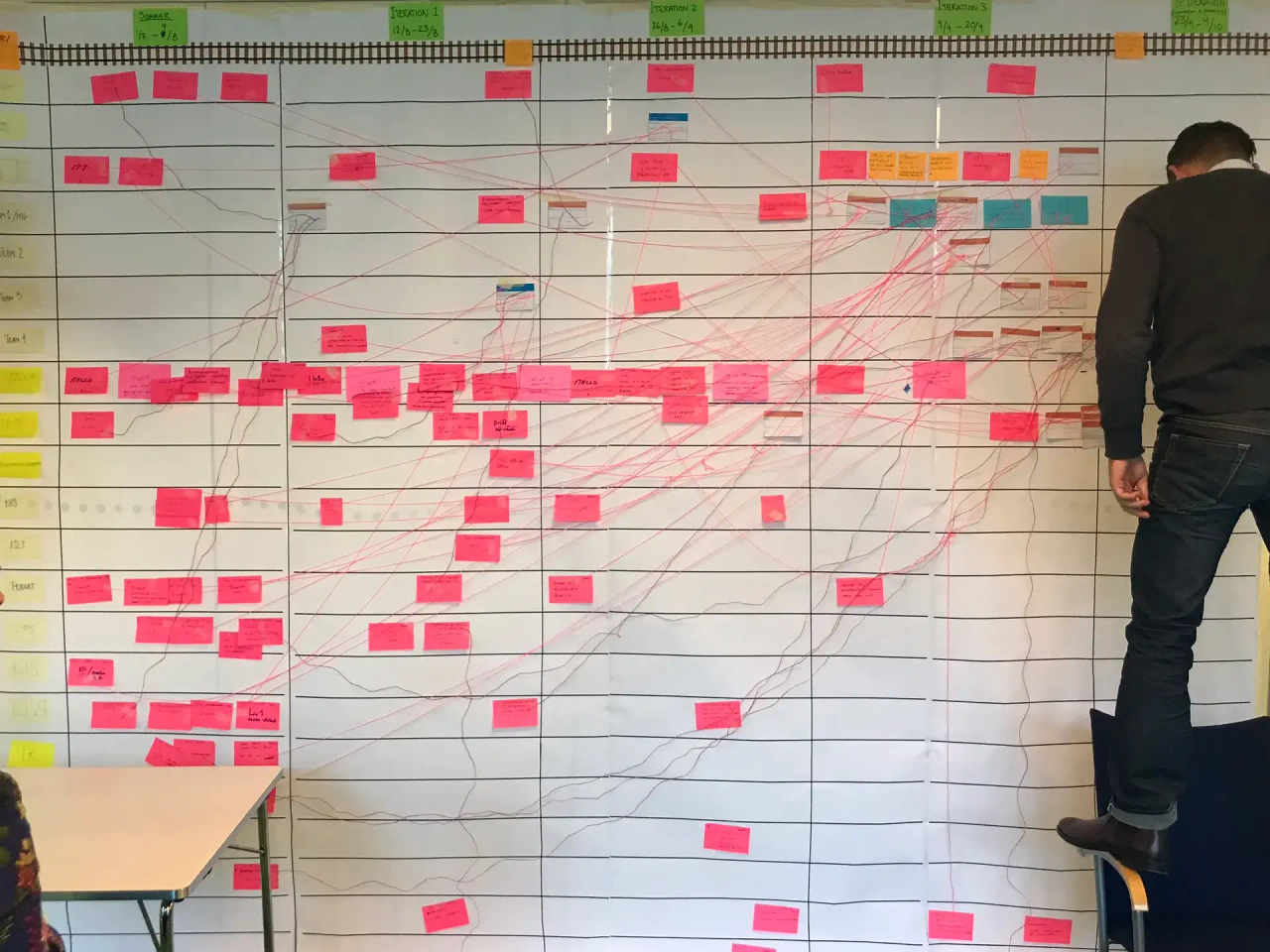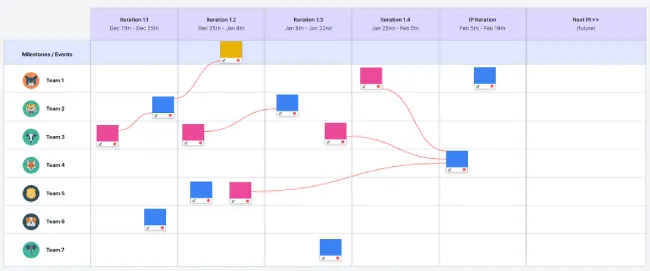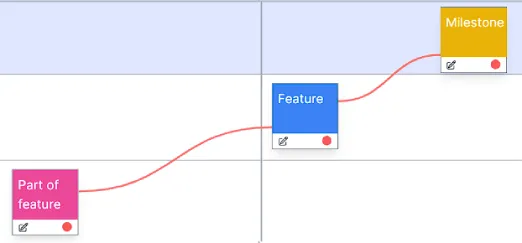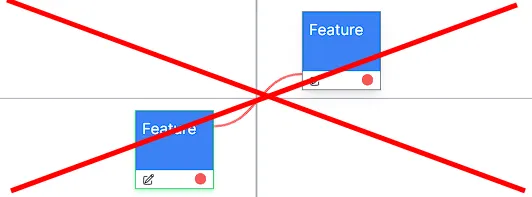
During PI planning the people that do the work plan the work. By visualising anticipated value deliveries and the collaboration that is needed to make them happen, the teams jointly create the ART planning board. The act of building the ART Planning Board is as important, if not more, than the ART Planning Board itself. It is when collaboration and dialogues happens that alignment is created.
The ART Planning Board serves as a visual representation of the expected value deliveries, the collaborative efforts required to achieve it, and their alignment with key milestones. Visualizing this information enables the teams to identify bottlenecks, structural challenges, and issues within the Planning Interval. This visibility empowers everyone to address and mitigate possible challenges. Constructing the ART Planning Board is a collaborative process. It allows teams to see the bigger picture, rather than getting lost in the details of individual stories. The goal is not for the teams to create the perfect set of stories or a perfect plan but rather to plan good enough to ensure that the objectives set by teams are Specific, Measurable, Achievable, Relevant, and Time-bound (SMART), and that essential team interactions have been identified. The visual representation of the plan is not meant to be static; it’s a living document. As Dwight D. Eisenhower once noted, “Plans are worthless, but planning is everything.”
“A visual representation of anticipated value delivery & the collaboration needed to make that happen”
All ART Planning Boards follow a similar structure. There will be minor differences in the information that the ART wants to convey and visualize but usually:
 An example planning board
An example planning board
Features, dependencies & milestones are all visualized on the planning board when they are expected to be done. Every feature is owned by one team, even if multiple teams are needed to be able to deliver it. Normally the team that does the majority of the work is the team that owns the feature. The feature is visualized on the planning board by the team that owns that feature, that team is also responsible for ensuring that agreed upon dependencies gets visualized on the board (after they have been agreed upon!)
 A correct linking
A correct linking
Dependencies represent support/collaboration needed from another team in order to deliver the feature that the team are planning.
Don’t visualize interteam dependencies. Look out for backward dependencies where the feature is visualized before the dependency; is that work really needed to be able to deliver the feature? Also look out for same sprint dependencies, feature and dependencies is visualized after each other within the same sprint - they carry a higher risk of not working out!
 Dependency linking
Dependency linking
Milestones should be specific progress points not based on development phases “requirements done” etc. Features can be linked to dependencies to visualize that they contribute to that milestone.
 Milestones
Milestones
A Feature and enabler features are independent. This means that there should never be a feature to feature dependency. If a team is in need of other teams support to be able to deliver a feature that work is considered part of that feature. The collaboration is visialized on the planning board as a dependency and feature.
 No feature to feature dependency
No feature to feature dependency
Tools are, by their nature, neither agile nor non-agile; their effectiveness is wholly dependent on how they are used. The ART Planning Board is, at its core, a tool for visualizing anticipated value deliveries and the collaboration required to bring them to life. It’s crucial to utilize this visualization as a living, breathing document. When plans inevitably change – and they will – teams can quickly assess the impact and make necessary adjustments.
If your ART don’t have the luxuary of being co-located you will need a digital planning board, try setting one up here!